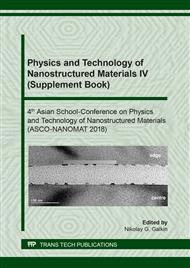p.155
p.161
p.167
p.175
p.180
p.186
p.192
p.197
p.203
Using Confocal Laser Scanning Microscopy to Study Fossil Inclusion in Baltic Amber, a New Approach
Abstract:
We demonstrate that confocal laser scanning microscopy could be successfully used for rapid search of the organisms in the dark part of the amber samples. Combination of mid-infrared spectroscopy, confocal laser scanning microscopy and optical microscopy, allowed to identify and assess the quality of Baltic amber with fossil inclusion. Inclusion was identified as a spider from suborder Araneomorphae family Typhlopidae and it was struck by the mycelium.
Info:
Periodical:
Pages:
192-196
Citation:
Online since:
June 2019
Keywords:
Price:
Сopyright:
© 2019 Trans Tech Publications Ltd. All Rights Reserved
Share:
Citation:


